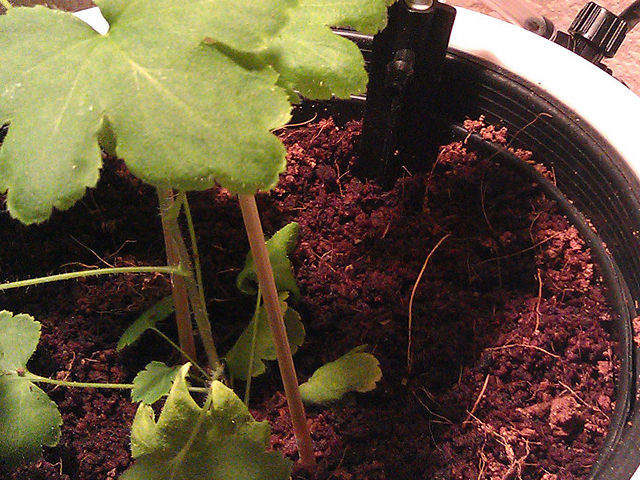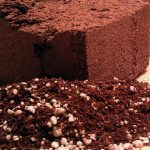Growing in Coco Coir: Getting Started

Coco Coir is an increasingly popular growing medium in hydroponics, and is generally considered to be a more sustainable and eco friendly replacement to peat.
This article isn’t meant to start a raging debate about which growing medium or method is best. It is intended to help those interested in using coco coir get started with it as a growing medium.
So raging debates aside, a 60/40 or 50/50 mix of coco coir to Perlite is the preferred growing medium at Gardenisto.
Very specifically, we like the coco coir products that contain a blend of coco fiber, dust and chunks. The blend creates a soil like medium that is clean and familiar to work with.
While coco coir can be used as a growing medium on its own, it acts too much like a sponge, and in most of our applications plants have done better when Perlite is mixed in.
Perlite adds aeration to the mix, and improves drainage. Without the Perlite in the mix, it is difficult to tell if coco coir is saturated. The growing medium can look and feel dry in the first inch or two, but feel like a wet sponge 4 inches beneath the surface.
 Perlite helps blend the coco coir’s water holding abilities more evenly throughout a pot, and helps to prevent over watering by allowing more even drainage and water retention.
Perlite helps blend the coco coir’s water holding abilities more evenly throughout a pot, and helps to prevent over watering by allowing more even drainage and water retention.
Our early experiments used pure coco coir, which led to over watering, poor plant growth, plant damage, and some plant loss. Mixes with Perlite outperformed pure coco coir without question.
Getting started is easy.
Mix 60% dry coco coir(mixed variety of fiber, dust, and chunk) to 40% Perlite
Add a dry organic plant starter fertilizer like E.B Stone organics to the mix, at half the recommended quantities.
Add any Mycorrhizae, inoculants, and dry hormones to the mix. We like to give our young plants as much help as we can without overdoing it, and Mycorrhizae has been that extra boost that we can always rely on.
Now we will create a dilute nutrient solution. We will eventually add this to our dry ingredients, but its important to do a few things to it first. Its good to start with a PH neutral Distilled Water, but tap water will work, so long as it isn’t too hard.
If you can, try to monitor and adjust the PH of your solution, and if possible, to formulate your nutrient solution to be specific to your plant variety’s needs.
B vitamins, rooting and plant growth regulating hormones. Get some, and use them! They help prevent plant shock, and bring them back from wilt, etc. Or does is it? We say No, but we also say Yes. B Vitamin alone has not been proven to prevent shock, or stimulate root growth. Not consistently and conclusively since studies done on B Vitamins in the 30s that originally produced these claims. However! If a stressed plant in a bad wilted state is unable to produce its own Thiamine(B1), or the growing medium does not have a readily available supply, then a supplement will make it available to the stressed plant. We like to mix our B Vitamins with other less common nutrients, hormones, kelp blends, and then mix it all together with molasses and mycorrhizae to inoculate the medium as well as the plant.
Calcium and Magnesium
Coco fiber has a tendency to absorb Calcium and Magnesium, making it unavailable to plants. So either add some CalMag+ to your nutrient solution. Or make a Not to give your plants a foliar feeding of essential nutrients.
Mix the nutrient solution into the dry ingredients until the consistency is like loamy soil. You can use distilled water, but some nutrients really should be used, and/or a subsequent watering should have nutrients.
Don’t over saturate the growing medium, and make sure it is well mixed in a clean bucket, or tote.
Fill your growing container to the height that will support your plant or seedling. Don’t compact the mix, any more than it takes to keep a small plant in place.
Prepare your plant or seedling for planting. At this point, directly inoculate the roots with mycorrhizae or any other stimulants if you plan to use them.
Gently place your plant or seedling in the mix and fill around it until the mix is level with the base of your plant.
If you are compelled to compact the mix like you might to dirt… Well don’t. Only lightly compact the mix so that it can support the plant. It’s not soil, it just looks like it.
Tags: coco, coir, growing medium, hydroponics Comments
Leave a Reply